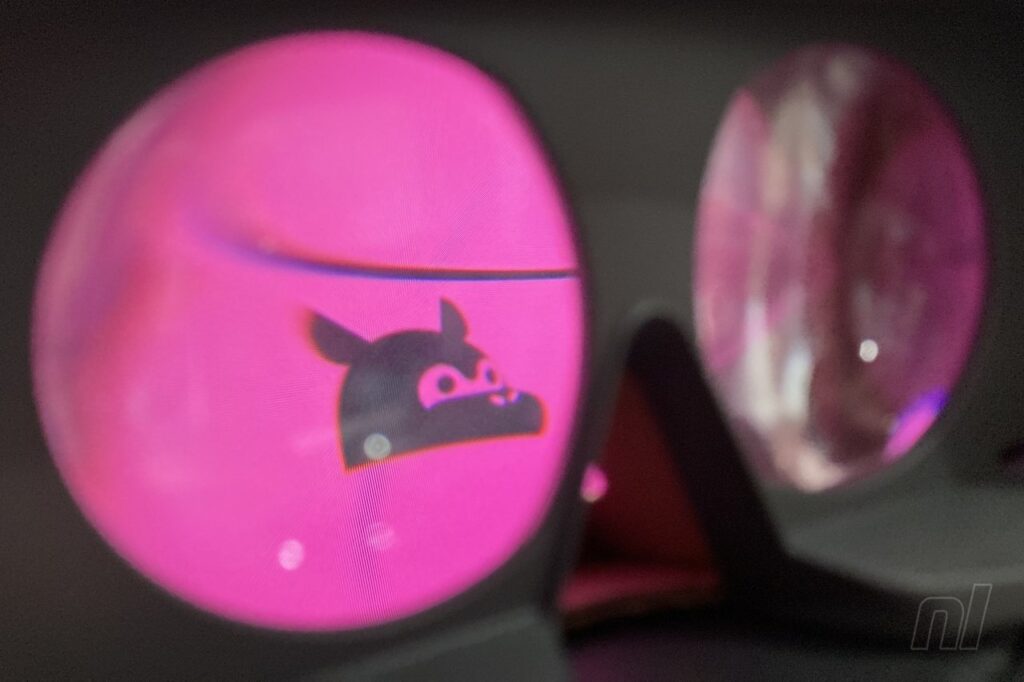Switch’s Secret Best Couch Multiplayer Game Won’t Be Playable On Switch 2


After eight years of articles and YouTube content covering the Switch, you might think there are no surprises left to uncover, but I’m here to say that the very best couch multiplayer on the system – a game by Nintendo themselves – was completely missed by seemingly everyone on the planet. There’s barely any mention of it online except for my own desperate Reddit posts trying to find someone who agrees with me.
What’s more, due to the peripherals it came packed with, it’s currently very difficult to buy – and it’s also one of the only games Nintendo have listed as being unplayable on the Switch 2.
So, from a preservation point of view, this article might be the last chance for people to realise that Kablasta scratches the same competitive itch as Wii Bowling, while in many ways offering a tighter, more varied experience that doesn’t deserve to be forgotten.
Kablasta is the Switch’s hidden, shining jewel
Some people likely haven’t even heard of the game, so let’s do a quick recap and make some bold statements in the process.
Kablasta was released as part of the Labo VR Kit, one of two games designed to show off the large orange blaster gun. It’s a two-player competitive experience that is — if you ignore the two-hour ordeal of setting up the actual gun — a huge omission from any list of the Switch’s best couch multiplayer games. Sadly, its competitive nature also makes it ineligible for our own list of the best couch co-ops.
Just like Wii Bowling, it’s pure fun: play with some friends, have a good time, win or lose, get addicted, and play again.
Through the VR, you’re transported to a sun-drenched Aztec-style pool arena. The gun you’re holding in real life is replicated in the VR world as a cartoonish blunderbuss. From two coloured scoring zones on either side, players take turns aiming and firing different kinds of fruit into the open mouths of hippos in the water. Some hippos are alert, mouths open, ready and waiting. Others are facing away from you or dozing with their faces submerged and can’t be hit.
A look above your head reveals plenty of floating pieces of fruit – apples, different melons, bananas, different coloured grapes, pineapples, and so on. Pump the gun so that a little vortex from the barrel satisfyingly sucks in your chosen fruit, take aim, anticipate the arc and behaviour of each item, fire, and luxuriate in the impressively engineered thud of the Labo blaster.
If a hippo gulps down that fruit, it’ll swim towards you and into your scoring zone. Make a difficult shot and hit a hippo at the far edge of the pool and, as it swims towards you, it’ll push the other hippos into your scoring zone along with it, allowing for multiple points in one go. You can also steal hippos from your opponent, along with a few other tactical twists.
Added together, Kablasta’s gameplay makes it one of the most compelling and competitive casual multiplayer games I’ve ever played, built on slow-paced strategy, precision aiming, sabotaging your opponent, and the tension that comes with not wanting to make a mistake and fall behind.
Fruit for thought
Time for an even bigger statement. Kablasta — along with at least one other Labo VR multiplayer — provides unique pass-and-play VR gameplay that doesn’t exist elsewhere. The strapless design of the Switch’s VR means that you’re able to pass the gun between turns effortlessly. This is instant, fun, and accessible VR gameplay – historic in its own way.
I daydream about why people failed to notice this game – the difficult build, how Labo was marketed at kids, the comparatively low resolution of the Switch’s screen.
The one thing I know for sure is that the out-of-the-box settings don’t sell its strengths. You have to change the default five pieces of fruit to ten pieces of fruit (as each piece of fruit represents one round, you’re doubling the length of the game). Selecting ‘fruit sharing’ is better too. It means players choose from the same selection, which adds weight to your choices.
If each game only lasts five rounds, as per the default, the impact of messing up a shot is completely lost and there’s no sense of building your score, no jeopardy.

Max out those rounds and you have a 10-shot, 20-minute multiplayer experience that slow burns to a tense finale. Seven or eight rounds in, you’ve carefully built a decent score – make a killer shot in the ninth, steal some hippos, and experience a genuine rush of excitement. Miss and feel pure disappointment. Lose and you’ll need to play again. You’ll demand a rematch. There are echoes of real-life sports and games. The final moments of a curling match. The final shots of Mölkky.
More than hungry hippos
Elsewhere, there are other impressive elements, the kind of attention to detail like when you accidentally threw your ball backwards in Wii Bowling and the characters all jumped up in surprise. In Kablasta the enthusiastic announcer, the cheering crowd, and the strange way that the hippos somehow feel as if they are familiar with the sport — professionals somehow — add a subtle touch of Nintendo quality.
And there’s depth. You need to master the different types of fruit and choose when best to use each one. Grapes fire like machine gun bullets or like a shotgun spread, depending on their colour. Bananas curve like boomerangs. Apples fly straight. Lean back and fire the pineapple high into the air and see it drift downwards like a helicopter seed, attracting multiple hippos around its landing zone. Blast a watermelon against a hippo’s forehead and it explodes into pieces that can feed multiple hippos.
You also need to play around with the whistle — which turns hippos, potentially opening up difficult shots — and the latch on the side of the blaster that, when flipped, displays each hippo’s preferred fruit. Choose correctly and the hippo swims towards you with added momentum. Arguably, Wii Bowling had far less going on.
With my best ever shot I aimed at the tree in the middle of the pool, another feature that adds strategic depth. I fired, knocked off four mangoes, fed multiple hippos, including the green hippo, worth triple points. Those hippos pushed five more along with them into my scoring zone – and I basked in the satisfaction of hearing the briiing briiing briiing sound out ten times for each point.
When I passed over the gun, I had glee in my eyes.
Everyone I’ve ever played Kablasta with — nieces and nephews, brothers and sisters, parents, friends — enjoyed it. That experience of bringing together multiple generations of gamers and non-gamers hadn’t happened for me since the Wii.
Technically, you can play Kablasta without the VR goggles, but it’s not how it’s meant to be experienced. And that’s a shame. With the Switch 2’s larger form factor — and slim-to-no chance of a Labo VR revival — this multiplayer gem looks set to be left behind. Part of me wonders if a few clever tweaks (some gaffer tape adjustments to the Labo cardboard, maybe) might somehow salvage it, providing the Switch 2 loads the cartridge.
Regardless, Kablasta deserves a place in history. My only hope is that this article will help make that happen.








